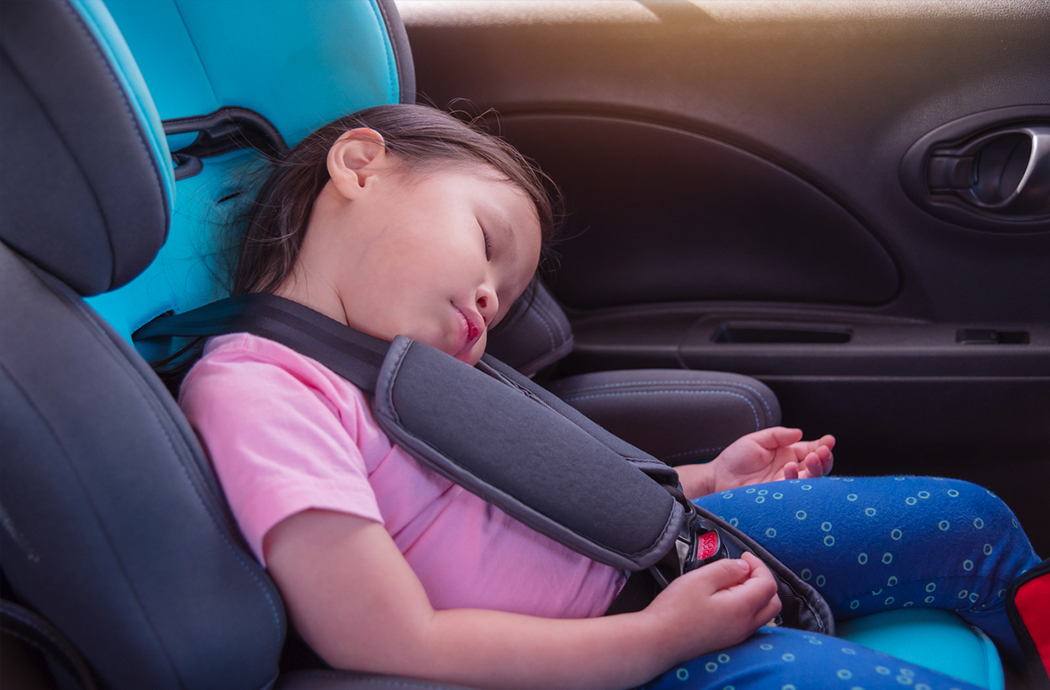My way or the highway: Driving safely in Singapore with kids
Got your house? Got your ride? Now it’s time to hit the streets of Singapore with the family. But safety’s first, as always. From the types of baby seats to choose from, to the road regulation laws of Singapore, here is your go-to guide for driving around the island with the kids.
Rules are rules.
Passengers below the height of 1.35m is required to be restrained with either a child seat or a booster seat.
These are the types of child restraints that are approved by Singapore Traffic Police:
- American Standard FMVSS 213;
- British Standards B.S. 3254: Part 2: 1988, B.S. AU 202a: 1988, or B.S. AU 185: 1983;
- Australian Standard AS 1754-1975 (including AS 1754.1-1989 Part 1, AS 1754.2-1989 Part 2 and AS 1754.4-1989 Part 4);
- European Standard ECE R44;
- Japanese Standard JIS D0401-1990.
Types of Car Seats.

Infant Seats
Infant seats are usually designed for babies from the ages of 0-2 years old. These seats are usually light and can double as a baby carrier. These come in a rear-facing seat, which has been proven by numerous of studies to be the safest form of child seats. These (and even the convertible seats below) usually come with a harness, either a 3 point or 5 point one.
Premature babies might not fit into a regular babyseat, and may require a car bed instead.
Convertible Seats
Convertible seats are designed to last from the start to end of your child’s need for a baby seat. Some of which can change back and forth from front-facing, to rear-facing seats. Convertible seats are generally big and bulky, making it difficult to bring around or move from car to car.

Booster Seats
Booster seats are designed for older kids who have outgrown baby seats but cannot use a seatbelt on their own yet. They’re usually available in the forward-facing position.
Pro-tip: Car seats do have an expiry date, so be sure to check out the dates on the seats especially if you are buying a secondhand or used car seat. As a rule of thumb, it is 6 years from the manufacture date. Also, pay attention to any wear or distress on the straps and plastics of the seat, as a damaged/weakened baby seat can put your little one’s life in danger.
Another reason why expiration dates exist is that safety standards and compliances are ever-changing, so make sure the seat you are buying is in compliance with current rules and regulations.
Installation.
There are two different ways of installing a car seat. Using your car’s seatbelt and attaching it to the tether’s of the baby seat or LATCH (Lower Anchors and Tethers for Children). Also known as ISOFIX or UASS in some regions, is the internationally recognised standard for car seat compliances. It is used very strictly in the USA, UK and Canada.

Public Transport.
Taxis are exempted from the compulsory child seat rule, provided the child is in the rear passenger seat. Since we care so much about our own flesh and blood, we recommend bringing your baby seat if you intend to travel by taxi. Your ride-hailing service couple Grab and Uber are not exempted from this rule.
There are options on their apps called the GrabFamily (for children between the ages of 4-7 years old) and Uber Car Seat (at least 12 months old and between 10-25kg) that can cater to some children. For your children outside the weight or age range, it might be a good idea to bring your own car or booster seat.
Grab charges $2-4 more depending on how many seats are used, while Uber has a surcharge of $5 for their car seat services. For the specifics and FAQs, click here for Uber and here for Grab.




